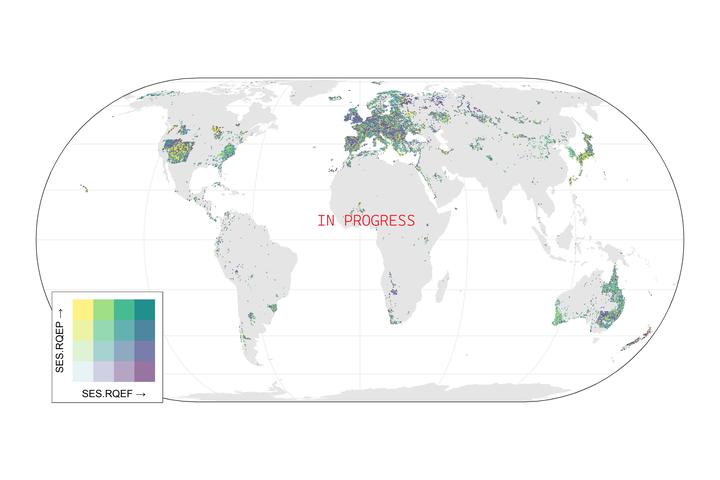Comparison of the global distribution of functional and phylogenetic diversity in plant communities.

Abstract
A species` realized niche can be analysed by the species’ relationship to other residents in the community. The trait distances of species present in a community, i.e. functional diversity, was a common approach adopted in the past. However, while plant species do have a unique combination of functional traits, they also represent the endpoint of unique evolutionary histories. Therefore, considering the phylogenetic relatedness of resident species in a community might also help understanding the niche differentiation in this community. But functional and phylogenetic species relatedness might differ based on climatic conditions and vegetation-types. We used the “sPlot” vegetation-plot database to tackle the question how functional and phylogenetic diversity relates and globally distributes. Our results suggests that functional and phylogenetic diversity are negatively correlated, and that they vary from high to low levels at relatively close geographical distances. Phylogenetic diversity depends on climatic change after the last glacial maximum and biome.